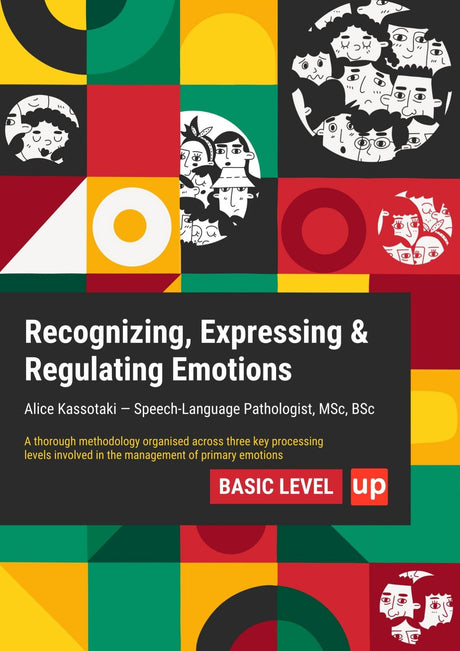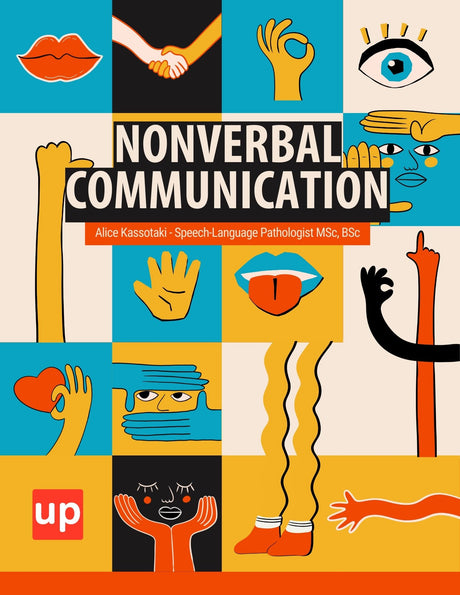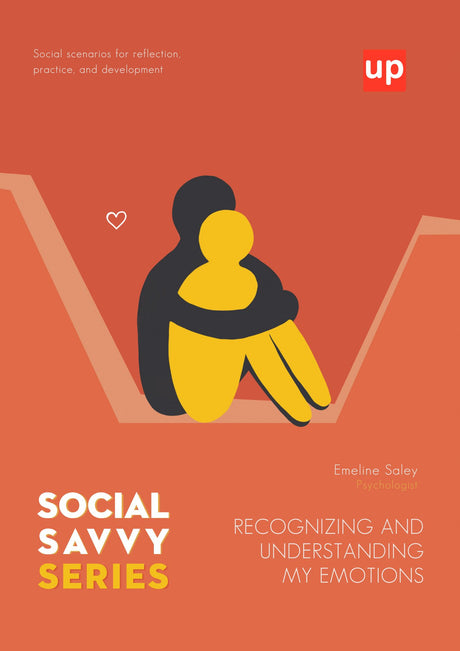Imagine a world where understanding emotions is as complex as learning a new language. For children on the autism spectrum, this is often their daily reality. Emotions are a cornerstone of human experience, but for autistic children, recognizing and expressing them can be particularly challenging, requiring specialized approaches.
Teaching emotional literacy to children on the autism spectrum is not just beneficial—it is crucial for their social integration and well-being. Emotions drive our interactions, and understanding them allows autistic children to navigate a world that often feels loud and overwhelming. From foundational concepts to cutting-edge tools, numerous strategies exist to support these children in their emotional journey.
Key Takeaways:
- Understanding Emotions is Crucial: Teaching emotions to children with autism spectrum disorder is vital for their social interactions and emotional regulation, helping them navigate a world that can often feel overwhelming.
- Diverse Tools Enhance Learning: Utilizing tools like Emotion Cards, Picture Cards, and innovative technologies such as Emotion Recognition Software and social robots can significantly improve emotional comprehension and expression in autistic children.
- Supportive Environments Foster Growth: Creating safe and supportive environments, along with consistent practice and collaboration between educators and parents, is essential for enhancing emotional skills and promoting emotional resilience in children with autism.
How to Teach Emotions to Autism:

Teaching emotions to autistic children is vital for their social interactions and emotional regulation. Many children with autism spectrum disorder (ASD) struggle to understand and express emotions. This can affect their ability to engage in social activities and form relationships. ABA therapy, which includes techniques like Discrete Trial Training, modeling, and role-playing, is an effective method for teaching emotional skills to children with autism.
Why Teaching Emotions Matters:
- Improves Social Skills: Understanding facial expressions and body language helps autistic children connect with others, enhancing their social skills.
- Enhances Emotional Responses: By recognizing basic emotions, children can manage intense emotions and respond appropriately to overwhelming situations.
- Builds Emotional Regulation: Learning about emotions can aid in controlling strong emotions, leading to better emotional regulation.
Tools and Techniques:
- Emotion Cards: These cards display universal emotions and enhance recognition skills in children.
- Picture Cards: Used to teach expressions of emotions through visuals, making learning more engaging.
- Safe Space: Creating a safe space allows children to express emotions freely and take deep breaths to calm down.
By focusing on these methods, children with autism spectrum disorder can gain a better understanding of emotions. This knowledge helps them engage in positive social interactions and navigate complex emotions with confidence.
Foundational Concepts of Emotions and Autism
Understanding emotions is a key part of human interaction. For autistic children, grasping these concepts can be challenging due to their unique way of processing the world. Understanding emotions is crucial for children with autism and other developmental disorders. Emotions play a crucial role in how we communicate and form bonds with others. For children with autism spectrum disorder (ASD), emotions often differ from those of neurotypical peers. These differences impact their social skills and emotional regulation. By exploring foundational concepts of emotions and autism, we can better support children in learning effective ways to express and understand feelings. This approach helps enhance their social interactions and emotional well-being.
Defining Emotions
Emotions are complex. They include a range of feelings like happiness, sadness, anger, and surprise. People express emotions through facial expressions, body language, and tone of voice. For autistic children, decoding these signals can be overwhelming. Basic emotions, such as recognizing an 'angry' frown, form the building blocks that guide more complex emotional responses. Teaching these to children with autism helps increase their knowledge and recognition of different emotions. This understanding is crucial for interpreting social cues and forming connections with others. By demystifying what emotions are, children with autism can learn to communicate their feelings more effectively.
Role of Affective Computing in Autism Education
Affective computing is a technological approach that aims to understand and respond to human emotions. In the context of autism education, this technology can be a valuable tool. It helps children on the autism spectrum learn and interpret emotional cues. Through devices equipped with sensors and software, affective computing can detect and respond to emotional expressions. This allows children to practice recognizing emotions in a controlled environment. Animation series like 'The Transporters,' which features animated vehicles with rule-based motion, also help children with autism recognize emotions by creating a predictable environment. Such technology can provide real-time feedback, guiding children through social interactions. By incorporating affective computing into educational settings, we can offer personalized learning experiences that meet the unique needs of each child. It enhances their ability to engage with the world more confidently and effectively.
Strategies for Emotion Recognition
Helping children with Autism spectrum disorder recognize emotions is crucial for their social interactions. Understanding facial expressions and body language is essential for them to interpret social cues. Emotion recognition involves identifying basic emotions like happiness, sadness, anger, and surprise. It helps children develop social skills and manage their emotional responses. By teaching these skills to children with autism, we enhance their understanding of emotions and improve their quality of life.
Discrete Trial Training (DTT) is a structured method that can be used to teach children to recognize and understand emotions.
Utilizing Visual Aids
Visual support plays an important role in teaching emotions to children with autism. Emotion Cards are an effective tool that depicts facial expressions linked to specific feelings. Picture cards showing various expressions help kids associate visual cues with emotional states. Visual aids provide a concrete representation of emotions, making the concept less abstract and easier to grasp. By repeatedly seeing and discussing these images, children can improve their emotional regulation skills.
Implementing Social Stories
Social stories are useful in enhancing the understanding of emotions among children with autism. They create a safe space where scenarios involving emotions and social interactions are explored. These stories break down complex emotions into simple narratives, helping children visualize emotional responses. Social stories can include real-life scenarios like a birthday party to help children recognize emotions. They serve as a guide, teaching kids how to navigate challenging social situations by understanding other people’s feelings. Social stories encourage children to take deep breaths and handle intense emotions calmly.
Structured Activities for Emotional Literacy
Structured activities are vital in developing emotional literacy in children with autism. These activities involve practicing recognition of emotions through games and role-playing. Teaching coping skills through structured activities is crucial as it helps children manage their emotions more effectively. For example, role-playing can help kids express emotions in a controlled environment. Group activities encourage kids to watch for body language and facial expressions during interactions. Additionally, role-playing positive emotional expression fosters social skills, enabling children to better engage with peers. These activities build emotional knowledge and improve the recognition of emotions in everyday life.
Engaging Multi-faceted Approaches
Teaching emotions to children with autism spectrum disorder requires creative and flexible strategies. Autistic children often find it challenging to interpret facial expressions and body language. Therefore, a multi-faceted approach can help them learn about basic emotions and social interactions. Engaging activities that involve expression of emotions, recognition to children, and use of tools like Emotion Cards are effective means to impart these skills. By incorporating fun activities, parents and educators can make the learning process enjoyable, fostering curiosity and excitement while enhancing the knowledge of emotions and emotional regulation in children with autism.
Importance of Interactive Learning
Interactive learning plays a crucial role in teaching emotions to autistic children. Traditional teaching methods may not capture their attention or interest. Instead, engaging activities like role-playing, using emotion cards, and creating a safe space can make learning about emotional responses more effective. Examples of such activities include tailored social stories and visual supports, which can enhance children's understanding of emotional recognition and expression. These activities allow children to practice understanding of emotions in a hands-on manner, reinforcing their learning experience. Interactive learning assists in uncovering complex emotions and promotes emotional expression, which is essential for high-functioning autism.
Incorporating Play in Emotional Education
Integrating play into emotional education offers children a fun and relaxed environment to learn. Play helps lessen the stress associated with intense emotions and allows children to engage with emotions in a non-threatening manner. Games and activities like using picture cards to identify facial expressions or acting out scenarios can deepen their understanding of emotions. Incorporating a child's special interests into play can enhance their engagement in learning about emotions. Through such play, children improve their recognition of universal and basic emotions, facilitating better emotional skills in social situations.
Play-based learning also provides the opportunity for children to practice emotional regulation. By engaging in pretend play and other structured activities, they develop the skills to manage overwhelming emotions and take deep breaths when needed. As children explore emotions through play, they build a foundation for strong social skills, making emotional interactions less intimidating and more rewarding. Encouraging play as part of emotional education allows children to learn at their own pace in a supportive environment.
Innovative Tools for Teaching Emotions
Teaching emotions to autistic children is crucial for their development. Understanding emotions helps them navigate social interactions better. Several innovative educational resources can aid this learning process by providing tools specifically designed for teaching emotional comprehension and recognition. These tools focus on skills to recognize and express emotions which are essential for children with autism spectrum disorder. They use various methods, from visual aids to interactive technology, to make emotions more relatable. These tools promote emotional skills development in an engaging way, providing safe spaces for learning. By enhancing their understanding of emotions, these tools help children manage intense emotions and improve social skills.
Emotion Recognition Software
Emotion Recognition Software is an emerging tool in teaching emotions. It helps autistic children recognize facial expressions and emotional responses. The software analyzes expressions of emotions through images or live video feeds. By using this technology, children can improve their knowledge of emotions and learn basic emotional responses. Picture cards or screens displaying various facial expressions can aid in this learning. Emotion Recognition Software provides immediate feedback, allowing children to adjust and understand complex emotions gradually. This interactive method enhances understanding, making it a promising tool for emotional expression and regulation in children with high-functioning autism.
Social Robots and Their Effectiveness
Social robots are proving to be effective in teaching emotions to children with autism spectrum disorder. These robots engage children through activities that encourage emotion recognition and social interactions. Interacting with social robots can aid in developing empathy in children with autism by teaching emotional awareness and regulation. With the use of body language and facial expressions, social robots create a relatable and interactive platform for learning. They provide a non-judgmental environment that can help manage overwhelming emotions. By observing and interacting with robots, children can learn emotional regulation skills. These interactions can also enhance their recognition of universal emotions. Social robots can take deep breaths or show simple emotional responses, helping children understand and mimic these emotional skills.
Creating Safe and Supportive Environments

Creating a safe and supportive environment is crucial for Autistic children to learn and express emotions. These environments act as a foundation where children feel secure to explore and understand their feelings. Addressing a child's emotional state in a safe and supportive environment is essential for helping them manage and understand their emotions. When children feel safe, they are more likely to engage in social interactions and practice emotional skills. To foster this, caregivers and educators can use Emotion Cards or picture cards to help children recognize facial expressions and body language. A consistent routine and clear expectations are also vital. By reducing overwhelming emotions and providing a structured environment, children with autism spectrum disorder can learn about emotional regulation in a stress-free setting.
Encouraging Emotional Resilience
Encouraging emotional resilience in children with autism means helping them manage Intense Emotions and adapt to social situations. Building resilience involves teaching children how to handle strong emotions constructively. By learning deep breaths and other calming techniques, Autistic children can gain skills to navigate complex emotions. Emotion expression exercises, such as role-playing or using storybooks, can also enhance their understanding of emotions. Caregivers can model appropriate emotional responses, showing children positive ways to react during difficult times. Emotional resilience empowers children, giving them the confidence to face challenges and explore social skills further.
Building a Trusting Relationship
Building a trusting relationship with Autistic children is essential for their emotional growth. Trust forms the basis for open communication and understanding of a child's emotions. Creating a safe space where children feel heard and valued encourages their participation in emotional expression activities. Consistency is key in forming trust, so maintaining a predictable routine helps children feel secure. Knowledge of emotions develops through interactions characterized by patience and empathy. By engaging in shared activities and showing genuine interest, caregivers can strengthen their bonds with the child. A trusting relationship provides a supportive backdrop for teaching emotional regulation and improves the child’s overall social skills.
Practical Coping Strategies
Teaching emotions to children with autism spectrum disorder can be challenging due to the difficulty they face in recognizing and managing emotions. Practical coping strategies help these children navigate social interactions and better understand their own emotions. These strategies often use visual aids, like Emotion Cards and picture cards, to illustrate facial expressions and body language. Children learn to recognize and label basic emotions such as happiness, sadness, and anger. By developing an understanding of emotions, autistic children can learn to manage their emotional responses better. Clear explanations and routines can further support the development of emotional skills, enhancing their overall social skills.
Mindfulness Techniques for Children
Mindfulness can greatly benefit children with autism by fostering emotional calm and focus. Techniques such as deep breaths and guided imagery help manage intense emotions. Encouraging children to take deep breaths when overwhelmed can ease anxiety and stress. Short, simple visualization exercises can create a safe space in their minds, promoting a sense of peace. Mindfulness teaches children to recognize and acknowledge their feelings without judgment, enhancing emotional regulation.
Mindfulness activities should be brief and engaging to hold children's attention. Picture cards depicting calming scenes can guide them through visualization exercises. Regular mindfulness practice can help children learn to pause and reflect before reacting to strong emotions. By developing these techniques, they can enhance their emotional expression and cope with complex emotions more effectively.
Emotional Regulation Methods
Emotional regulation is essential for children with autism, as it aids in managing overwhelming emotions. Several methods can promote emotional balance and improve social interactions. One approach is creating a routine that includes time for relaxation and expression of emotions.
Children with autism often face difficulty recognising their own emotions and those of others, including facial expressions, tone of voice, and body language. Using visual tools like Emotion Cards helps children identify and understand feelings. These cards can depict universal emotions, making them easier for children to recognize. Employing social stories can illustrate how to handle emotional situations. Encouraging a safe environment where children feel comfortable expressing emotions is crucial.
Role-playing exercises can be valuable, practicing responses to various social scenarios. Through repetition, children gain confidence in managing emotions. Teachers and caregivers should reinforce these methods with empathy and patience, as consistent support helps develop lasting emotional skills. With these techniques, children gain valuable skills to navigate their world.
Role of Educators and Caregivers

Teaching emotions to children with autism spectrum disorder is a vital part of their development and can be effectively taught through structured interventions. Educators and caregivers play a crucial role in this process. By understanding each child’s unique needs, they can tailor methods to enhance emotional skills. Recognizing facial expressions, understanding basic emotions, and using tools like Emotion Cards can aid in teaching emotional responses. Creating a safe space and supporting emotional regulation can also help. Educators must be patient and provide consistency to succeed in this mission.
Collaboration with Parents
Collaboration between educators and parents is key to teach children with autism spectrum disorder about emotions. Parents offer insights into their child’s emotional responses and specific needs, which can help educators design effective strategies. Regular communication ensures everyone uses similar approaches, both in the classroom and at home. This unity can lead to better understanding and success in teaching emotions, as parents and educators work hand-in-hand toward common goals.
Professional Development and Training
For educators and caregivers, professional development is essential in teaching emotions to autism. Training provides adults with updated knowledge on recognition of emotions and new techniques. It also helps them understand body language and emotional expression, which are critical in helping children with autism spectrum disorder. Continuous learning ensures that they can address intense emotions and complex emotions effectively. This development creates a supportive environment where children can thrive emotionally.
Conclusion
Teaching various emotions to children with autism spectrum disorder enhances their ability to understand and express a range of emotions. This is done by recognizing facial expressions and body language, which are key for social interactions.
Key Strategies for Enhancing Emotional Skills:
- Emotion Cards: These cards provide visual cues to depict basic emotions. They improve recognition and response in social situations.
- Picture Cards: Similar to Emotion Cards, these help children identify and express complex emotions in a safe space.
- Deep Breaths: Teaching deep breathing techniques aids in emotional regulation, especially when faced with intense or overwhelming emotions.
- Role-Playing: Engaging children in real-life scenarios enhances their knowledge of emotional responses.
- Consistent Practice: Reinforcing skills regularly helps children with high-functioning autism grasp universal emotions more effectively.
By implementing these strategies, children on the autism spectrum can better navigate social settings, improving their social skills and emotional comprehension. Encouraging them in a supportive environment fosters significant growth in understanding and expressing emotions.
Frequently Asked Questions (FAQs)
-
How can I teach emotions to my autistic child? Teaching emotions to an autistic child can be achieved through visual aids like Emotion Cards, engaging in role-playing activities, and using social stories. These tools help in recognizing facial expressions and understanding body language, making the learning process more interactive and effective.
-
Can autistic children learn to understand emotions the same way as other children? Yes, autistic children can learn to understand emotions the same way as other children. With the right strategies, such as consistent practice, a supportive environment, and the use of innovative tools like Emotion Recognition Software, they can improve their emotional comprehension and expression.
-
What role do educators and caregivers play in teaching emotions to autistic children? Educators and caregivers are crucial in teaching emotions to autistic children. They provide the necessary support and use tailored methods to enhance emotional skills, such as recognizing facial expressions and understanding basic emotions, while creating a safe space for emotional expression.
-
How do visual aids help in teaching emotions to children with autism? Visual aids, such as Emotion Cards and Picture Cards, provide concrete representations of emotions, making them easier for children to recognize and understand. This helps in improving their emotional regulation skills and ability to interpret social cues.
-
What are some effective emotional regulation methods for autistic children? Effective emotional regulation methods include using visual tools like Emotion Cards, creating routines that include relaxation time, and employing role-playing exercises. These methods help children manage intense emotions and improve their social interactions.
-
How does collaboration with parents enhance teaching emotions to autistic children? Collaboration with parents allows for a unified approach in teaching emotions, ensuring consistency between home and educational settings. This partnership helps in understanding the child’s unique emotional responses and needs, leading to more effective strategies.
Original content from the Upbility writing team. Reproducing this article, in whole or in part, without credit to the publisher is prohibited.
References
-
American Psychological Association. (2023). Understanding Autism Spectrum Disorders. Retrieved from https://www.apa.org/topics/autism-spectrum-disorder
-
Autism Speaks. (2023). Teaching Emotional Skills to Children with Autism. Retrieved from https://www.autismspeaks.org/teaching-emotional-skills
-
Baron-Cohen, S. (2023). Mindblindness: An Essay on Autism and Theory of Mind. MIT Press.
-
National Institute of Mental Health. (2023). Autism Spectrum Disorder: Overview. Retrieved from https://www.nimh.nih.gov/health/topics/autism-spectrum-disorder
-
Grandin, T. (2023). The Autistic Brain: Helping Different Kinds of Minds Succeed. Houghton Mifflin Harcourt.
-
Eur Psychiatry. (2023). Emotional Regulation in Autism Spectrum Disorders: A Systematic Review. Retrieved from https://www.eurpsy-journal.com/emotional-regulation-in-asd









